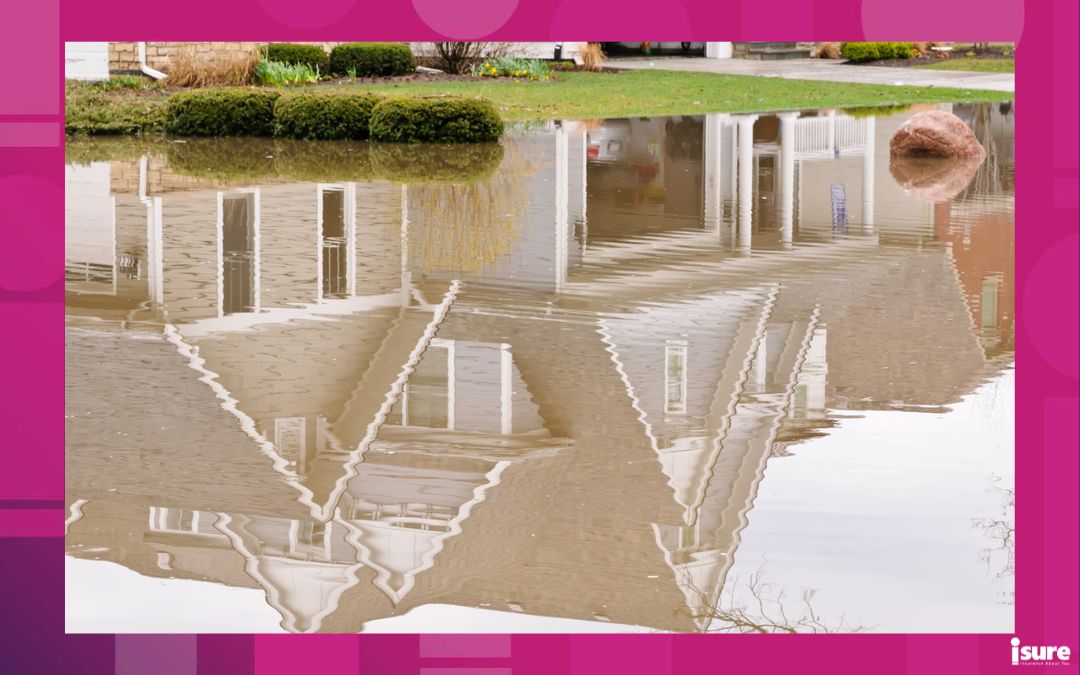Home insurance premiums are a big expense, and insurance companies consider many factors to estimate the likelihood that you will make a claim, and what that claim will cost. Rating factors can vary from company to company. So, we’ve gathered some information about the cost of home insurance, as well as some of the main things that will affect the cost of your property insurance to help you understand what goes into calculating home insurance premiums in Ontario.
What is home insurance?
Home insurance is what protects you, your family and your possessions from loss and liability. It also protects your mortgage lender, which is why it’s a requirement for securing a mortgage. Reputable mortgage lenders will not consider an offer to first-time home buyers without proof of homeowner’s insurance. The home insurance that you buy determines what coverage you will receive in the event of a claim. The insurance policies usually start off with basic coverage:
- Your house
- Other buildings on your property
- Personal property
- Liability
Below are the main components of a home insurance policy:
- Named Perils: Most home insurance policies cover named perils, such as fire, wind and theft.
- Contents insurance: This is the portion of your policy that protects your belongings.
- Liability: This part of your policy protects you in the event that someone is injured or killed on your property.
- Loss of use: This portion of your policy protects you in the event that damage from one of your named perils prevents you from being able to live in your home while it is being repaired.
How are home insurance premiums calculated?
The cost of home insurance is not a one size fits all answer. In fact, what you pay depends on quite a few different factors. From your location or the wiring in your home to how your home is heated, lots of things can impact how much your home insurance costs. These factors will determine the likelihood of you making a claim – and how much a claim may cost. The higher the likelihood is, the higher your premium will be.
Factors that can affect your home insurance premium include:
1. Location, location, location!
Where you live is one of the biggest determinants in how much you will pay when it comes to home insurance. Insurance companies track claims that occur in your neighbourhood based on three factors:
- The type of claim
- The number of claims
- The cost of each claim
Insurers use your area’s claim history to determine the likelihood of your future claims.
2. Your claims history
In much the same way insurance companies use the claims history of the city and neighbourhood your home is in to determine rates; your personal claims history also plays a role in determining your rates. Good credit history can reduce your home insurance premium because statistics show that people with a good credit history make fewer insurance claims. The scoring system considers an individual’s financial health and credit performance at a specific point in time.
3. Amount of coverage
The old saying “you get what you pay for” applies when purchasing home insurance. If you choose a basic coverage package, your insurance rates will be lower than, say, a more comprehensive package that offers better security in case of unforeseen damages.
To learn more about home insurance coverage, please click here.
4. More than just a home
If you decide to rent a portion of your home, have a home-based business or make significant changes to your home’s structure or its use, you need to inform your insurer so that they can adjust your home insurance policy accordingly. You don’t want to find out after a fire or weather-based disaster that these changes are negated or are now excluded from coverage.
5. What’s inside counts
- Electrical wiring: The type of electrical wiring and how electricity comes into your home is a consideration to insurers when looking at cost. Aluminum or knob-and-tube wiring increases the risk of fire. Insurers may give you time to remove it or they can inspect it for safety. Breakers are safer than fuses, and you should have at least 100-amp service to avoid overloading and fire.
- Age of your roof: The older the roof, the higher the premiums. As a rule, your roof should not be more than 20-years-old.
- Plumbing: Homes with copper or plastic piping get better insurance rates because galvanized or lead piping means old plumbing that has a higher risk of cracks and leaks.
- Wood stoves: Although most homes do not use this as a primary source of heat anymore, wood-burning stoves do play an important part in your rate determination. As both a fire and carbon monoxide hazard, insurers may need to inspect them if not maintained or installed properly. As a result, having a wood stove can play into the factors that affect your home insurance rate.
- Security systems: By investing in a monitored security system and fire alarms, you can not only can decrease your insurance rates, but have peace of mind that in an emergency, help is on the way.
- Improvements or additions: Pools or additional structures will raise your rate because of the additional risk or extra property to insure.
6. Replacement cost
One of the more important factors that affect home insurance costs is the rebuild value or replacement cost. Replacement cost is how much it will cost to rebuild your home if it is destroyed. The size of your home and the materials used to build it factor into its replacement cost. As a result, the higher the replacement cost of your home means you will pay more for home insurance.
7. Proximity to fire hydrants/fire stations
How close the nearest fire hydrant or fire station is to your home is necessary for your insurer to calculate your insurance costs. Why? Because the sooner a fire can be put out, the less it will cost to repair your home. The closer you are, the lower your rates, so consider buying a home that is within 300 metres of a fire hydrant. This will increase the “appeal” of your home to insurers.
There are many other variables that impact your insurance rates, such as:
- Your house frame (i.e. wood or concrete)
- Availability of a garden
- Any additional endorsements that you need (e.g. jewelry)
- The size of your insurance deductible
- The risk of crime
- The risk of severe weather damage
The most notable factor is the city in which you live.
External factors that influence premiums
Here are some other important factors that contribute to rising premiums, as reported on the Economical Insurance website:
- Municipal infrastructure is getting older: Outdated infrastructure makes sewer backups more frequent, resulting in more damage-related claims.
- Intense population growth: A surge in population causes a serious strain on electricity generation and distribution resources. Increases in demand can result in an increasing number of brownouts and blackouts.
- Neighbourhood trends: As areas grow, demographics and risks will change. New commercial developments being built in primarily residential areas and new subdivisions being built might alter municipal infrastructure and risk.
- Increased costs: Emergency services, skilled trades and our personal belongings are more expensive. Inflation means higher prices for emergency services and labour costs for repairs when we need them, making paying for claims more expensive, as well.
- Eco (but not budget) friendly: While we all are trying to do more to help the environment, it should be noted that it will likely result in higher costs to you, the homeowner. Items, like solar panels and energy-efficient appliances, will cost more to repair and/or replace should they break. This is factored into your home replacement cost when renewing your homeowners’ policy.
What can you do?
As a policyholder, you do have options to potentially lessen the effects of a rise in home insurance premiums:
- Discounts: Some insurers offer discounts that can help bring down premium prices, including discounts for properly-installed and monitored security systems, as well as fire alarms. Claims-free discounts may also be available to you.
- Soft credit checks: Insurers can run a soft credit check that may lead to lower premium prices if a homeowner has good credit.
- Increase deductibles: The higher your deductible, the lower your insurance premium will be.
- Membership/employment discounts: Some companies and professional organizations offer group rates for insurance.
- Bundling: Consumers can save by bundling home and auto insurance together with the same provider.
- Proper coverage: One of the most common insurance claims is flooding. When it comes to water damage, there can be big differences between policies offered, so let’s find the best one for your needs!
Shop around for home insurance premiums
If you are looking at purchasing home insurance for the first time or wondering if you can find a better deal, be sure to contact an isure broker to help you find the best rate. Our isure representatives will discuss any questions or concerns you have regarding reasons for possible future increases to premiums and ways to potentially help offset these costs.




